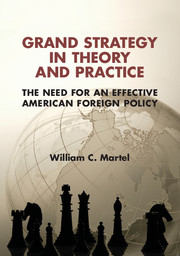Book contents
- Frontmatter
- Dedication
- Contents
- Acknowledgments
- 1 Introduction
- 2 Contemporary Classics in American Grand Strategy
- Part I Makers of Grand Strategy
- 3 Foundations of Grand Strategy
- 4 Ancient and Modern Eras of Grand Strategy
- 5 Grand Strategies of Empire in the Modern Era: Sixteenth to Twentieth Centuries
- 6 Revolutionary and Nuclear Eras of Grand Strategy
- Part II Makers of American Grand Strategy
- Part III Conclusion
- Notes
- Index
6 - Revolutionary and Nuclear Eras of Grand Strategy
Published online by Cambridge University Press: 05 January 2015
- Frontmatter
- Dedication
- Contents
- Acknowledgments
- 1 Introduction
- 2 Contemporary Classics in American Grand Strategy
- Part I Makers of Grand Strategy
- 3 Foundations of Grand Strategy
- 4 Ancient and Modern Eras of Grand Strategy
- 5 Grand Strategies of Empire in the Modern Era: Sixteenth to Twentieth Centuries
- 6 Revolutionary and Nuclear Eras of Grand Strategy
- Part II Makers of American Grand Strategy
- Part III Conclusion
- Notes
- Index
Summary
To continue the overview of the evolution of grand strategy begun inChapter 4, this chapter covers the revolutionary and nuclear eras of the nineteenth and twentieth centuries. The scholars and strategists presented here established the foundations for understanding the articulation of grand strategy and developing it as a discipline for guiding the implementation of state policy in the presence of revolutionary ideologies and the influence of nuclear weapons and deterrence. This chapter also examines a range of case studies on the design and implementation of grand strategy by states and statesmen throughout the revolutionary and nuclear eras. It begins with the rise of authoritarianism and its critical leaders during World War II, continues with the revolutionary leaders during the Cold War, and concludes with the struggle between contending grand strategies during the Cold War and its aftermath. The five cases from the twentieth century help build an understanding of how the emergence of revolutionary ideologies and nuclear deterrence influenced the development of grand strategy.
This chapter examines two principal themes that governed the evolution of grand strategy in the twentieth century. One is the struggle between contending ideologies, and the other is the development of nuclear weapons. Of particular note in this discussion is how the transformation of Marxist ideology and the opposing ideology of democracy and capitalism formed the basis of the contending grand strategies that guided the policies pursued by the Soviet Union, the United States, and many other states during the Cold War. This chapter then examines the design of the West’s grand strategy during the Cold War at a time when government policies were influenced directly by how nuclear weapons were being developed and managed.
- Type
- Chapter
- Information
- Grand Strategy in Theory and PracticeThe Need for an Effective American Foreign Policy, pp. 121 - 164Publisher: Cambridge University PressPrint publication year: 2015



